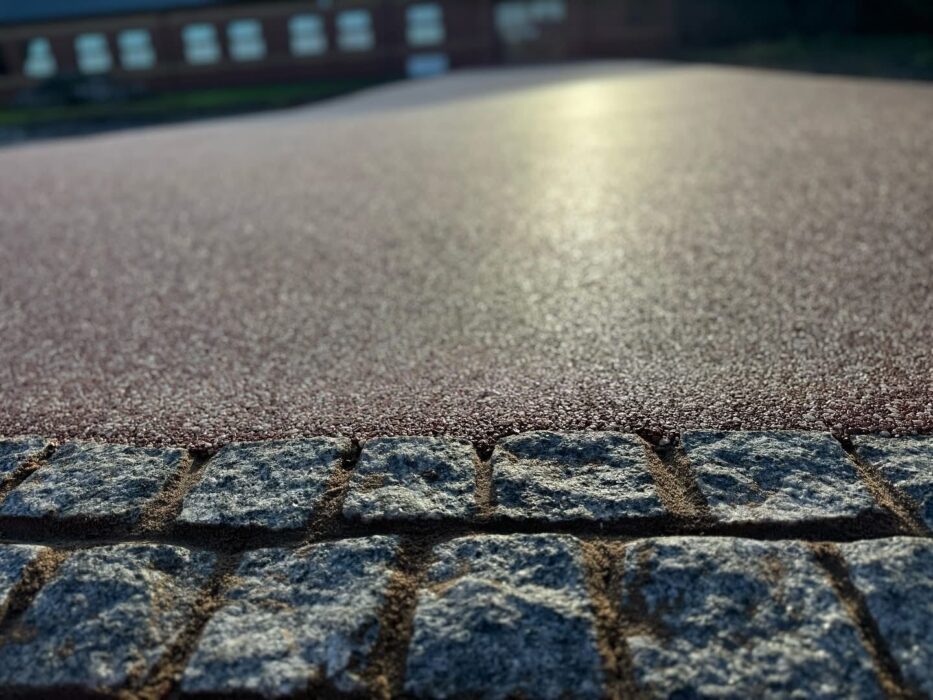
Tarmac Driveways: A Complete Guide for Homeowners
A well-built driveway enhances the appearance of your home, increases functionality, adds value, and provides long-term convenience. Tarmac driveways remain one of the most popular choices in the UK.
Whether you’re looking to replace an existing driveway or start from scratch, this comprehensive guide will cover everything you need to know about tarmac, from its benefits and installation method to cost breakdowns and long-term upkeep.
What is Tarmac?
Tarmac, or tarmacadam, is a type of road covering material made of crushed stone combined with tar. Today, the tar is frequently replaced by bitumen, a byproduct of petroleum processing that gives tarmac its signature black colour and durability.
Tarmac is frequently used in road construction, parking lots, and residential driveways due to its strength, smooth surface, and ease of application – all at a moderate cost.
Why Choose a Tarmac Driveway?
Tarmac is popular not only because it’s inexpensive but also because it works well under duress (literally). Here are the key reasons why homeowners select tarmac.
1. Durability.
Tarmac driveways Keston are built to withstand enormous loads and are frequently used. They are highly resistant to wear and tear, making them suitable for homes with numerous vehicles or larger cars. When compacted, tarmac provides a durable surface that can withstand harsh weather and frequent pressure.
2. Cost-effective Installation
Tarmac is one of the most cost-effective solutions for driveways compared to block paving, gravel, or resin-bound. The materials are inexpensive, and the installation method is rapid and straightforward, resulting in lower labour expenses and faster project completion.
3. Quick and Easy Lay
Tarmac can be laid and set in a few days, depending on the size of the region. Unlike some other materials, tarmac takes only a short time to cure or settle. This is especially useful if you wish to minimise disruption in your home life.
4. Low maintenance.
Tarmac is much less likely to support weed growth than block paving or gravel. Furthermore, it does not shift or loosen with time, eliminating the need to reset blocks or add additional gravel. Occasional cleaning and applying a sealer every few years are usually sufficient.
5. Smooth, professional appearance.
Tarmac creates a tidy, uniform appearance that complements old and modern homes. To add contrast and flair, it can be edged with bricks, kerbstones, or ornate borders.
Are There Any Drawbacks?
While tarmac has numerous benefits, it is critical to understand its limitations before selecting it for your property.
– Prone to cracking
Tarmac can break over time if the base is not prepared correctly or if the material is applied too thinly. If left untreated, these cracks can lead to potholes, so contact an experienced contractor and keep the surface in good condition.
– Fading Over Time.
Tarmac’s deep black hue can fade to grey after several years of UV exposure. This is primarily decorative and has little effect on the driveway’s performance. Still, if beauty is essential, you may apply a UV-resistant sealant regularly.
– Heat sensitivity.
Tarmac may soften significantly in exceptionally hot weather (particularly typical in southern locations or during heatwaves). This is unlikely to cause long-term damage; however, parking big cars in one location for an extended period may result in indentations.
– Drainage and planning requirements.
Tarmac is a non-permeable substance that may contribute to surface water runoff. In regions where this is a problem, you may be obliged to construct suitable drainage or even seek planning approval if you cover a significant area.
Installation Process
An asphalt driveway’s lifetime and attractiveness depend heavily on proper installation. Here’s how it is usually done:
1. Ground Preparation.
The first stage is to excavate the area to the desired depth (typically between 250 and 300mm), removing any existing materials and debris. The land is then levelled and compacted to guarantee a solid foundation.
2. Subbase Installation
A sturdy sub-base is constructed with crushed stone or MOT Type 1 material. This is compacted extensively to give a solid foundation for the top layers.
3. Edging (Optional but recommended)
Brick or stone edging can be placed at this point. It enhances the aesthetic attractiveness while also containing the tarmac.
4. Base and Surface Layers.
A foundation layer of tarmac is applied, followed by a top coat (wear course). Each layer is crushed using a roller to provide a smooth, level surface. To guarantee adequate bonding, work the hot tarmac fast before it cools.
5. Finishing and Curing.
Once it has been laid and compacted, the tarmac needs time to cool and set, which normally takes 24 to 48 hours. After that, the driveway is ready to use.
Maintenance Tips for Long-Lasting Driveways
- To maintain your asphalt driveway looking and performing well, follow these basic maintenance steps:
- Clean regularly by sweeping away leaves and debris. To eliminate dirt accumulation, use a hose or a pressure washer.
- Seal every 3-5 years: A protective sealer helps to prevent fading, cracking, and water damage.
- Avoid heavy things in hot weather since prolonged pressure at high temperatures might deform the surface.
- Cracks should be repaired as soon as possible: Filling tiny cracks early prevents them from growing into larger problems.
- Keep an eye out for oil or gasoline spills: Petroleum products can break down the binder on the tarmac, so clear up any spills soon.
Is a Tarmac Driveway Suitable for You?
Tarmac is an excellent choice for an inexpensive, dependable, quick-to-install surface that looks fantastic and performs well over time. While it does not offer the creative design options of block paving or resin, its convenience and low cost make it a popular choice among UK households.
Before you begin, hire a qualified contractor with a proven track record. A well-prepared subbase and high-quality materials are essential for a tarmac driveway that will last 15 to 20 years, if not longer.
